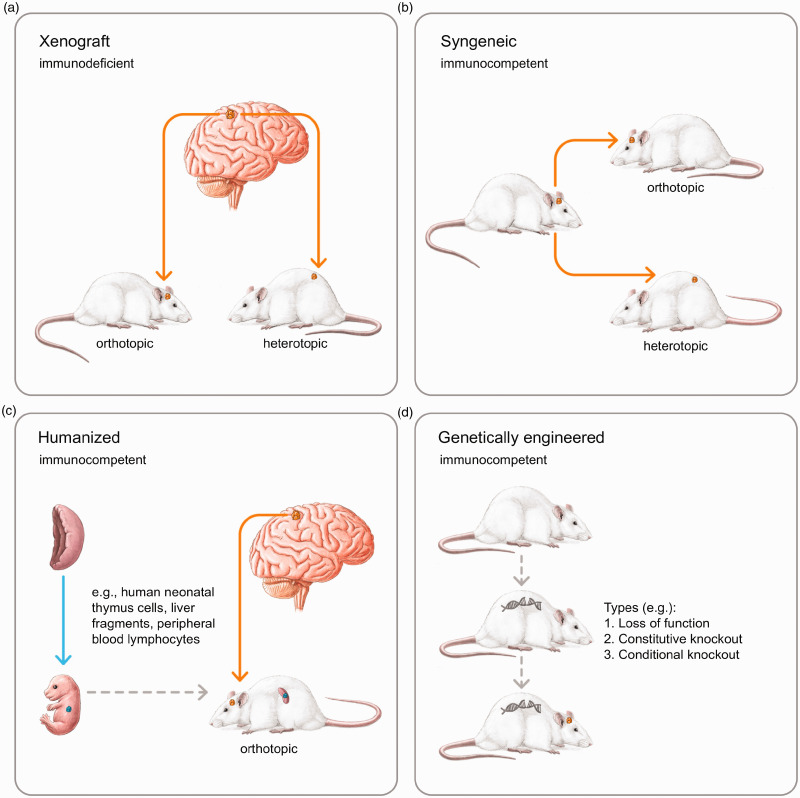Figure 1.
In xenograft models, glioma cells of human origin are transplanted subcutaneously (heterotopic) or into the brain of an immunodeficient rodent (orthotopic) at a particular point in time. The tumor microenvironment is immunosuppressed and graft versus host reactions may occur (A). In syngeneic glioma models, the graft and host are syngeneic (heterotopic and orthotopic) and no graft versus host reactions occur due to an immunocompetent tumor microenvironment. This immunological advantage might be a disadvantage for translational research, because no human glioma cells are transplanted. In orthotopic models, glioma cells are examined in their natural TME, while in heterotopic models, the tumor microenvironment is unspecific, but implantation is much easier (B). In humanized glioma models, human immune cells and/or tissues are transplanted into rodents, thereby “humanizing” the murine immune system. If glioma cells and immune cells are derived from the same donor, graft versus host reactions are unlikely in an immunocompetent tumor microenvironment with a human character (C). In the genetic models, the rodents form the glioma endogenously due to genetic techniques. A surgery is not necessary, the immune properties of the tumor microenvironment remain unaffected, and graft versus host reactions do not occur (D). The following applies to all representations: Arrows that show a time sequence are dashed. If it is the same individual, the animals look in the same direction. If there are two different individuals, the animals look in opposite directions. Different individuals within an image have different tail positions.

